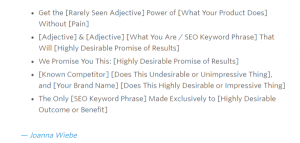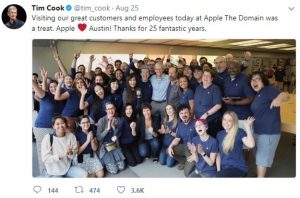In the world of SEO, links are fairly important. Links amassed to websites, along with a series of other SEO tactics, have a significant effect on how prominently a brand will appear in search engine rankings, and subsequently impact how much organic traffic the site will garner as a result. It’s logical to assume that the higher a company’s website appears in a search engine result, the more likely a user is to select that result, and pursue interest with the respective brand. For this reason, an effective SEO strategy is quite relative to an organization’s success, and a backlink profile is an integral part of what that strategy should encompass.
That being said, not just any link back to a website can help to grow brands online. Gone are the days where ‘black hat’ SEO strategies aimed at link building were considered acceptable and even impactful. Links that are authoritative, earned, and relevant are the ones that make a difference with backlink profiles today. On the other hand, links that are paid for (like on mass-listing or directory sites), “schemed,” or completely irrelevant are not going to be very helpful in terms of building a backlink profile that helps overall search engine rankings. And in fact, ‘linkbuilding’ schemes that fail to adhere with Google’s guidelines and best practices can actually have adverse impacts on rankings, which in turn can sink profitability and growth quite quickly.
So, in such a competitive marketplace where SEO has become common practice for a lot of organizations and digital real estate is difficult to secure, how do you garner links back to your website in a meaningful and impactful manner?
- Traditional PR Initiatives
On a simplistic level, it makes sense that traditional PR initiatives can help you to naturally amass links back to your website. If you’re promoting your organization, your products, or your services, to a relevant news outlet, it’s likely that if they are going to reference any of the above mentioned in their article, they’re going to include a link to your website to provide the reader with some context, or even a resource for additional information.
Think about an article in an online beauty publication that’s a collection of the editor’s pick for the top 5 hair serums of the year. If you’ve captured the editor’s interest during your media outreach and they’ve decided to include your product as part of their feature story, they’re going to include a link to your website so that users can purchase the product if they so choose. On the other end of the spectrum, say you’re a B2B that offers website design services. If a relevant journalist is putting together an article that falls within your brand’s area of expertise and you’ve been able to offer valuable insights that will help round out the story, you’re likely to get a link back to your website even if only to “cite” the spokesperson as a source.
Conducting media outreach can be incredibly beneficial in securing links. Leverage media contact tools like Cision to identify the right reporters and editors that cover stories in your industry, or even subscribe for free tools like HARO which connect sources with journalists that are working on specific stories in real-time. By interjecting your expertise or highlighting your product offerings in a way that provides value to their readers, editors will be likely to include a link back to your website when they reference your insights. As with any sort of PR initiative, it’s crucial to remember that relevancy is key.
- Interesting & Captivating Content
It may sound obvious, but if your content isn’t unique or captivating, users probably won’t want to read it, and authoritative outlets probably aren’t going to want to link to it. From a logical standpoint, any reputable platform (regardless of industry) wants to offer their readers something valuable and genuinely interesting. When you’re creating content with the objective to reach a wide audience, think about user needs and how you can meet them in a way that is both valuable and has not already saturated the internet.
Infographics, video tutorials, FAQs, and even case studies all tend to perform well in terms of reach and engagement. This type of content offers an enjoyable experience to users while still offering a great amount of value and is far more likely to get picked up or shared by outlets that are covering a similar subject. Content of this sort is generally what you see going viral on the internet and shared by tons of people across social media, thus reaching a significant audience.
Often times brands will make the mistake of thinking of content as strictly copy-based blog posts when in reality that isn’t the case. Take the time to design and create unique pieces of content that can truly serve a purpose to the consumer, and you’ll find your content naturally amassing links because of that very reason. From the perspective of an everyday consumer scrolling through their social media feed, you’re much more likely to stop to read an article that has some sort of multimedia, imagery, or unique differentiator to it. If you can get the attention of your audience and relevant news outlets with your content, when they share it with their readers, you’ll be more than likely to receive a link back to your site when they provide “source” information. As long as your content is housed on your site domain, these links will continue to serve a purpose in building the backlink profile for your brand.
- Content Contributions
The idea of thought leadership as part of an integrated marketing strategy is quite important. Thought leaders are the people that represent your organization and are considered the real experts of the industry. By leveraging the insights that thought leaders at your company have in a way that enables you to connect with your audience, you can not only generate brand recognition, but you’re likely to amass some links too.
Whether you’re a service provider or a CPG brand, there are undoubtedly relevant niche publications that your audience is likely to visit frequently. Many authoritative sites offer contributor programs where experts from outside organizations can write and author complete articles within their area of expertise. Sometimes, bylines from these articles will include a link back to your website, however even if they do not, this isn’t to say there is no “link value” from these content contributions. Once your article is shared or published, you can push it out on social media (and hopefully the publication does as well) to help extend its reach. From there, every opportunity to reach more users is yet another opportunity for the right contacts at the right publications to find value in your piece and include a quote or two from your article, and ideally a link back to your site when they reference who the expert is.
Building A Backlink Profile
Building a backlink profile is one element of a strong SEO strategy. Aside from the link value that these media placements have for your brand, if the outlets linking to your site are relevant and authoritative (and they should be) there is definitely some traditional branding value as well. As with any digital marketing tactic, it’s important that throughout this entire process you think about how you can provide value to your users.
Digital & Social Articles on Business 2 Community(64)




